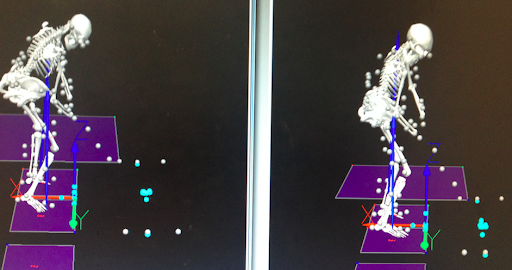A brilliant statement by Bryson DeChambeau’s lifelong golf coach Mike Schy was the basis for this article. When asked what he thinks is the movement that causes the most inconsistency among golfers, he made a completely instinctive, off-the-cuff statement that only someone with his years of being a keen observer of all skill levels of golfers could have, “Professionals are the greatest steerers of the golf ball on the planet – and they were always told ‘don’t steer’. Amateurs try to steer but are not ready to, because they don’t have the strength or ability yet. So they’re told ‘try to trust, try to trust’ and yet they’re always trying to steer. The pro golfer, when he’s ‘on’ is the epitome of ‘steering’. When he goes away from that, when he’s trying to trust timing, that’s when the ball goes everywhere.” The “steer”, incidentally, is considered by many to be a last-minute effort by the hands to try to square up the face at impact.
So according to Schy, the best thing an elite golfer can do is let the ‘steer’ happen. He probably said that because a really skilled golfer’s subconscious mind knows what to try to do in the split second before impact to save a shot. This is a well-known concept from the motor control world. Motor control scientists are those who try to figure out how the brain tries to organize human movement. A pioneer in the field of motor control, Nikolai Bernstein, has said that feedback on the sensory effects of a movement plays a substantial role in the control of complex movements. Of course in the golf swing when the feedback from a downswing about to go awry is really late, only those with many years and repetitions of the movement can even attempt to do anything about that feedback. So it may be seen why only professional and other skilled golfers might get late feedback of how their downswing is going and still be able to attempt a last-minute change – a movement which could very well be termed “steering”!
However, there is one reason why the professional probably begins to doubt the seemingly effective steering. And that is his unexpected two-way miss. In a video on some recently-explored swing-change ideas (https://www.youtube.com/watch?v=1aeTZTMSZcw), DeChambeau said, “I gotta change something. I can’t go out and win a tournament and go out and miss the cut the next week. I need to be way more repeatable”. He then said he tried something and found that if, like Jordan Spieth, he had his lead elbow pointing towards target, he could not possibly hit it left, and he was able to achieve that position by “going to the max” of lead (his left) shoulder internal rotation (upper arm rotated inwards towards the torso). This was part of a conversation Bryson had with golf instructor Chris Como, and they spoke in detail about how getting a body part into an “end-range of motion” can create a lock to prevent a body segment from overshooting a good position at impact.
Getting the lead shoulder into an end-range of internal rotation is not always possible, as it requires specific positions of the trail arm and torso to happen simultaneously. Moreover, an end-range of motion in a joint is a risk factor for injury. Additionally, there are much simpler ‘locks’ to prevent undesirable movements than those created by interfering with the rather complex situation of the two hands joined together at the club’s grip. Finally, probably the main cause of the two-way miss from misdirected steering, which many professionals experience and really do not know the cause of (see page 72 of https://en.calameo.com/read/004756792786810f37cc8), is the position of the trail shoulder, elbow and wrist when the club is parallel to the ground during the downswing (see picture below).

Because the professionals make an extremely rapid pelvic rotation towards target, the shoulders, which are strongly coupled with the pelvis’ rotation among professionals (we know this from research), rotate open too. This serves to position the trail shoulder into protraction (forward bend) and internal rotation (see picture below). And that is a problem for the trail elbow, as it is designed to most easily extend (straighten out) when the shoulder is slightly externally rotated. So, trail elbow extension becomes an awkward movement, leaving the wrists and hands to “fend for themselves”. And THAT is the cause of steer, with the golfer scrambling to do something very late in the downswing to square up the hands, and not always succeeding. It may thus actually be a case of an effective steer BEING timing dependent rather than the opposite of it, all predicated upon how easily the trail elbow can straighten. The inability to steer effectively is exacerbated under pressure, when arm and forearm muscles tense up.
Only one swing – The Minimalist Golf Swing (MGS) - prevents the early protraction and internal rotation of the trail shoulder, and thus positions the trail elbow so that it is straightening while the shoulder is more externally rotated. As the elbow extends more comfortable, the wrists are able to accomplish their downswing roles more efficiently. While not a solution to the problem, the sign that the trail arm is in a better position is when the forearm is not at 90°, or perpendicular, to the torso (picture on the left, below) but rather at about 45° to it (picture on the right), when the shaft is horizontal. Moreover, there are several factors that require to happen to ensure a good trail shoulder position, so that a quick-fix downswing movement would not be adequate to improve the situation. A facsimile of the MGS is therefore the only sure way to prevent a last-minute, timing-dependent steer on a consistent basis.

